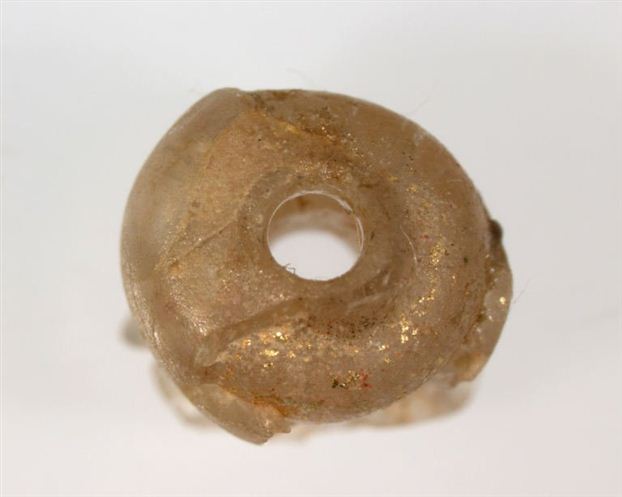Romans in Japan?! June 25, 2012
Author: Beach Combing | in : Ancient , trackback***Dedicated to all these who sent this in: sorry I’ve misplaced the list!***
Beach has long since pioneered the wrong place, wrong time tags that set out examples of artifacts, languages, ideas and even DNA turning up in unexpected places or unexpected time periods. These have included such wonders as the last Latin speakers of Africa, Japanese torpedo boats in the Baltic and Turkish in medieval Cambodia. Today he wanted to push the boat out a little further with a recent report on Roman finds from Japan.
Tests have revealed three glass beads discovered in the fifth-century ‘Utsukushi’ burial mound in Nagaoka, near Kyoto, were probably made some time between the first and the fourth century, the Nara National Research Institute for Cultural Properties said.
The glass beads in question – reports differ but there seem to be three – do look Roman – note the tell-tale gilt, but they are only 5mm in length. And, as Beach has learnt to his peril, in archaeology as in linguistics, small things are more easily mistaken than bigger things. The Japanese scientists have claimed – in press releases, no academic publications have yet emerged – that their evidence is also chemical.
Japan was badly burnt in 2000 by the archaeological forgeries associated with Shinichi Fujimura. It is unlikely, after that fiasco, that as august a body as the Nara National Research Institute for Cultural Properties would have lightly announced such a discovery. Then again as always with these ‘far-out’ stories, if the glass turns out to have been made by, say, some talented craftsmen in Korea there will be no correction in the international press… So if you are reading this in 2013 go out and hunt down the academic work and see what the real deal is.
For now though just how incredible would a Roman find in fifth-century Japan be? Well, on the scale of extraordinary finds we might talk of three kinds of geographical linkage. (i) Place A and B are in contact with each other: e.g. ancient Scandinavia and Britain. (ii) Place A and B are in indirect contact with each other: e.g. the medieval Baltic and India. (iii) Place A and B were not in any kind of contact with each other: e.g. Pre-Columbian American and Sub-Saharan Africa.
There was no Japanese-Roman contact in antiquity – there are very vague clues demonstrating or perhaps better hinting at direct Chinese-Roman contact – so we are clearly not talking about category (i). But Japan and Rome, at either ends of Euro-Asia, were part of a single trading system so nor are we talking about (iii) ‘no contact’. Looking at Ptolemy Korea seems to have, somehow, found its way into the Roman cartographical tradition and India was certainly visited by Roman merchants. India was linked to China and China was linked to Rome. These baubles are so small that they could easily have been carried from place to place and looking at the date discrepancy we are speaking of at least a century and perhaps several centuries between their creation and their burial outside of Kyoto. In other words, this discovery should take our breath away: but it need not change anyone’s world view.
Beach is always on the look out for wrong time/wrong place finds: drbeachcombing AT yahoo DOT com
***
The great Moonman is contributing: A Corliss reference about “British Neolithic jade axes” in his Archeological Anomalies : Small Artifacts, pg 211 seems relevant. Apparently, actual real archeologists collected some 60 highly finished neolithic jade hand axes (celts). These were also found widely in Western Europe. “Since no source for jade of the high quality represented by the celts is found in Europe, this leaves us with Asia or Mesoamerica.” The former implies long distance Neolithic communication/trade across Eurasia, the later long neolithic voyages. (Ref. New Scientist, 21:235, 1964). Thanks Moonman!



